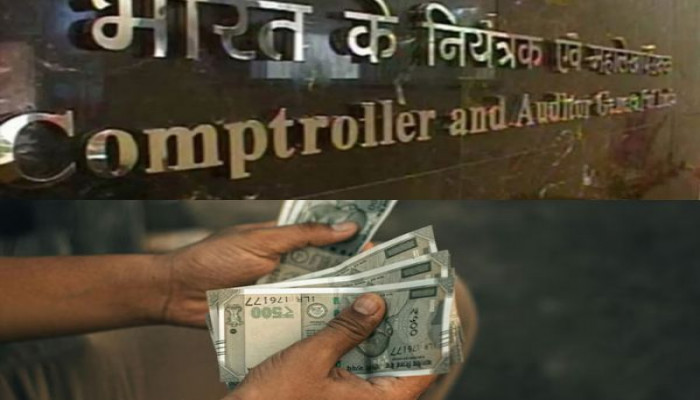States’ debt triples in a decade, CAG warns of rising burden
- In Reports
- 07:22 PM, Sep 20, 2025
- Myind Staff
The total debt of India’s 28 states has risen sharply over the last ten years, growing more than three times from Rs 17.57 lakh crore in 2013-14 to Rs 59.60 lakh crore in 2022-23. The figures come from a first-of-its-kind report by the Comptroller and Auditor General of India that looks at the financial health of states over the past decade.
The report was released on Friday by CAG K Sanjay Murthy during the State Finance Secretaries Conference.
It said the combined debt of states, which includes internal borrowings and loans and advances from the Centre, stood at Rs 59.60 lakh crore at the end of 2022-23. This was 22.96 per cent of their total Gross State Domestic Product of Rs 2,59,57,705 crore. GSDP is the total value of goods and services produced within a state.
“Compared with the total public debt of the states in 2013-14 of Rs 17,57,642 crore, debt in FY 2022-23 has increased by 3.39 times and from 16.66 per cent of GSDP to 22.96 per cent of GSDP,” the report said.
Among individual states, Punjab had the highest debt-to-GSDP ratio at 40.35 per cent, followed by Nagaland at 37.15 per cent and West Bengal at 33.70 per cent. The lowest ratios were in Odisha at 8.45 per cent, Maharashtra at 14.64 per cent and Gujarat at 16.37 per cent.
“As on 31st March 2023, eight states had public debt liability of more than 30 per cent of their GSDP, six states had public debt liability of less than 20 per cent of their GSDP and the remaining 14 states had public debt liability between 20 to 30 per cent of their respective GSDP in FY 2022-23,” the report said.
The report also pointed out that the total debt of states in 2022-23 was 22.17 per cent of India’s Gross Domestic Product, which was Rs 2,68,90,473 crore.
It explained that state debt comes from a variety of sources, including loans raised from the open market through securities, treasury bills and bonds, borrowings from banks, Ways and Means Advances from the Reserve Bank of India, and loans from financial institutions such as the Life Insurance Corporation of India and NABARD.
Over the years, the debt of states compared to their revenues has remained high. It ranged between 128 per cent and 191 per cent of revenue receipts between 2014-15 and 2020-21. When compared with total non-debt receipts, it was between 127 per cent and 190 per cent during the same period.
“On an average, public debt of the states has been about 150 per cent of their revenue receipts or total non-debt receipts. Similarly, public debt has ranged between 17-25 per cent of the GSDP and on an average, 20 per cent of the GSDP. The marked increase of 4 per cent, from 21 per cent of GSDP in FY 2019-20 to 25 per cent in FY 2020-21 is attributable to decrease in GSDP in FY 2020-21 being Covid year. The increase in loans from the Union Government during the period 2020-21 to 2022-23 was on account of back-to-back loans in lieu of GST compensation shortfall and special assistance as loans to states for capital expenditure,” the report said.
The report also referred to the “golden rule of borrowing”, which says governments should take loans only for investment or capital creation and not to fund routine spending. But it noted that 11 states were using borrowed money to cover their current expenses.
“Net borrowings during a year reflect the difference between gross borrowings and repayments made. A comparison of the capital expenditure and net receipt of public debt by the states in FY 2022-23 suggests that in 11 states (Andhra Pradesh, Assam, Bihar, Haryana, Himachal Pradesh, Kerala, Mizoram, Punjab, Rajasthan, Tamil Nadu, and West Bengal), capital expenditure was less than the net public debt receipts,” the report said.
“This could be due to part of the debt receipts meeting the revenue deficit. In the case of Andhra Pradesh and Punjab, capital expenditure was as low as 17 per cent and 26 per cent of the net borrowings and in the case of Haryana and Himachal Pradesh, about 50 per cent,” the report said.







Comments